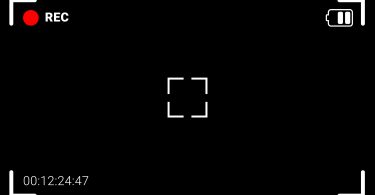The D1 or bust mentality is a popular but misguided trend among recruits and parents who are poorly informed about the college baseball opportunities at other levels. The truth is, there is great baseball and outstanding opportunity at every level of college baseball. Many people also get caught up in the D1 hype and fail to realize that level designation is a poor way to evaluate the quality of a program and the opportunities they provide. We encourage you to focus on finding a fit, rather than obsessing over a particular level. To help you, this article busts some of the common myths about D1 and non-D1 college baseball.
Level Designation
You’ve almost certainly heard of D1 baseball, but there is also D2, D3, NAIA, and 3 different levels of junior college baseball (NJCAA), in addition to other junior college leagues around the country. Each level is guided by the same rules, but within a given level, there are huge differences in program resources, scholarships available, and ultimately, player experience. For example, comparing a fully funded Power-5 D1 program with the allowed 11.7 scholarships to an under-funded (less than full 11.7 scholarships) mid-major D1 can be like comparing apples to oranges. One plays all over the country, travels by plane, and has all the bells and whistles at its disposal, while the other plays regionally, travels exclusively by bus, and has coaches doing laundry after games. Both D1, but very different experiences for the player.
It’s also true that there are programs at every level (NAIA, JUCO, etc.) that could compete with and beat programs at the D1 level. Some players with the skills to play at the D1 level also choose to play at other levels for a variety of reasons. Simply put, don’t make assumptions based on simply on level designation. Always do your homework on programs of interest before jumping to conclusions.
D1 Opportunities
Of all the high school baseball players in the U.S., only 2% go on to play D1 baseball and less than 1 percent get an athletic scholarship scholarship to programs each year. Today, as a result of the pandemic, D1 baseball roster spots are more competitive than ever. If you’ve watched D1 baseball games on TV or in person, than you already know how talented you have to be to play at that level. If we’re being honest, some D1 baseball can be cut-throat and more business-like than any baseball you are used to. The expectations and pressures to perform can be very high, and players who don’t progress as expected (especially when they have big scholarships) often end up transferring out, whether on their own or by coach’s decision. Simply put, the work required to compete is harder than anything a high school player will ever have experienced. The higher the level of play, the higher the pressure to perform.
Myth #1: There is no good college baseball outside of D1.
Truth: Every division of NCAA baseball offers quality baseball. Would you believe me if I told you that there are some D3 schools that compete against D1 schools regularly and even beat them? It’s true. As we said earlier, there are programs at every level (D2, D3, JUCO, and NAIA that could be competitive with D1 programs. Still not sold? While D1 moves the most players to the professional ranks, each year, players are drafted out of every division. If a competitive program with a high level of play is important to you, you’ll find that at all levels.
Myth #2: You can’t get any baseball-related financial assistance from Non-D1 programs.
Truth: You can get financial packages for all levels of college baseball. While D3 schools don’t offer athletic scholarships, many coaches can come up with creative ways to get their players other financial packages to help them pay for school. Athletic scholarships are also available to certain levels of JUCO ball as well as D2 baseball and NAIA. In addition to athletic scholarships, there are many other types of scholarships that students can apply for, and all students should file for financial aid by filing a FAFSA form. You can find out about that here.
Myth #3: There is no way to make it to the next level if you play for a Non-D1 school.
Truth: Players from all levels of college baseball get selected in the MLB draft, sign free agent contracts, play Indy (independent professional teams not affiliated with a MLB org), or sign to play over seas. It’s never been more true that developing into a prospect can happen anywhere (Just ask Flatground App!). Junior college players are eligible to be drafted each year, unlike D1 players who must wait until after their 3rd year or when they turn 21. Some notable non-D1 players include: Albert Pujols (JUCO), JD Martinez (D2), Nick Markakis (D2), and how about former New York Yankee stars Scott Brosius (D3), Tino Martinez (D2), and Jorge Posada (JUCO).
Myth #4: If you don’t get a D1 scholarship, no one will be interested in you as a college baseball player.
Truth: This simply isn’t true. D1 programs make up less than 1/5 of all college baseball programs. If players are willing to explore different levels, they will find that over 1600 programs are out there to be discovered. We think there is a college baseball program that would be a good fit for almost any high school baseball player. To get a better idea about the D1 alternatives, browse information about each level here or explore programs from all different levels here.
Myth #5: If you are not good enough to play D1 out of high school, you will never be good enough.
Truth: Every player develops along a different timeline and not making it to D1 out of high school doesn’t have to be the end of your D1 dreams. If your D1 interest falls short in high school, JUCO baseball is a great option to keep your dream alive while you improve you skills, mature, improve your academics, or any combination of these things. While JC ball will not work miracles, many JC players work hard, improve, and end up transferring to D1 schools. To learn more about community college baseball, start here.
Playing college baseball at any level puts you in elite company (Just over 10% of high school players go on to play in college!). With 1600+ college baseball programs to choose from across all levels, there’s no reason to buy into the D1 or bust hype. Be open-minded, pursue YOUR fit relentlessly, and find the program that will allow you to keep playing baseball while getting a great education.







